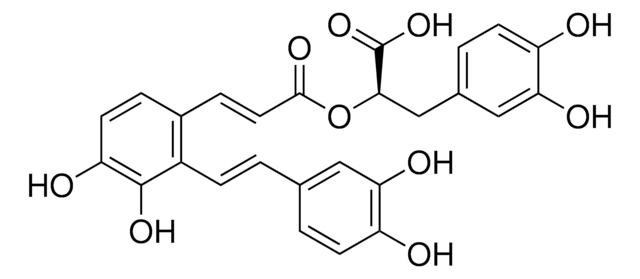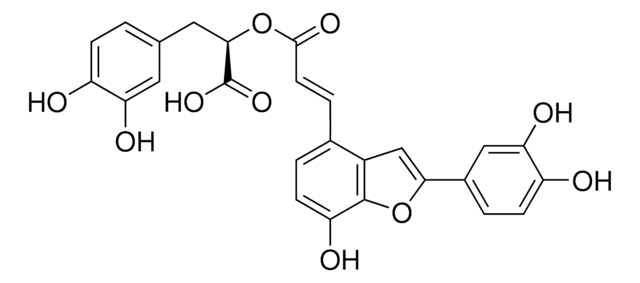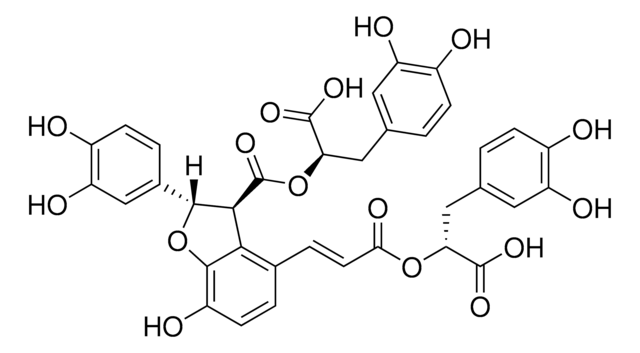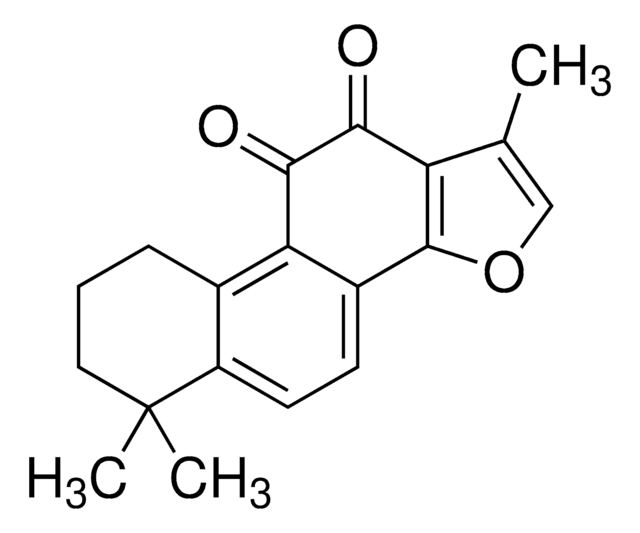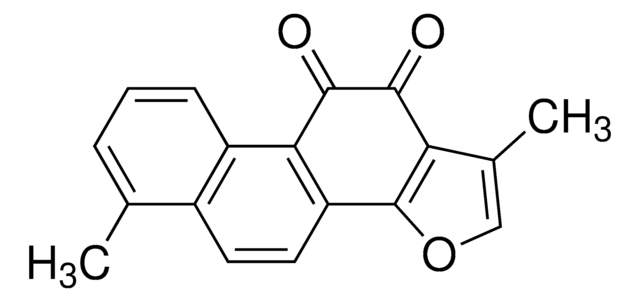SML0045
Salvianolic acid A hydrate
≥98% (HPLC)
Synonym(s):
Dan phenolic acid A hydrate
About This Item
Recommended Products
Assay
≥98% (HPLC)
form
powder
color
yellow
solubility
H2O: ≥19 mg/mL
shipped in
wet ice
storage temp.
−20°C
SMILES string
O.OC(=O)[C@@H](Cc1ccc(O)c(O)c1)OC(=O)\C=C\c2ccc(O)c(O)c2\C=C\c3ccc(O)c(O)c3
InChI
1S/C26H22O10.H2O/c27-18-7-2-14(11-21(18)30)1-6-17-16(4-9-20(29)25(17)33)5-10-24(32)36-23(26(34)35)13-15-3-8-19(28)22(31)12-15;/h1-12,23,27-31,33H,13H2,(H,34,35);1H2/b6-1+,10-5+;/t23-;/m1./s1
InChI key
XFUSRNNWIRPEDG-FYLUTCCGSA-N
Application
Salvianolic acid A hydrate has been used as rosmarinic acid derivative for the inhibition of DNA polymerase e in human cell lines.
Biochem/physiol Actions
Storage Class Code
13 - Non Combustible Solids
WGK
WGK 3
Flash Point(F)
Not applicable
Flash Point(C)
Not applicable
Regulatory Listings
Regulatory Listings are mainly provided for chemical products. Only limited information can be provided here for non-chemical products. No entry means none of the components are listed. It is the user’s obligation to ensure the safe and legal use of the product.
JAN Code
SML0045-BULK:
SML0045-5MG:
SML0045-VAR:
SML0045-25MG:
Certificates of Analysis (COA)
Search for Certificates of Analysis (COA) by entering the products Lot/Batch Number. Lot and Batch Numbers can be found on a product’s label following the words ‘Lot’ or ‘Batch’.
Already Own This Product?
Find documentation for the products that you have recently purchased in the Document Library.
Customers Also Viewed
Our team of scientists has experience in all areas of research including Life Science, Material Science, Chemical Synthesis, Chromatography, Analytical and many others.
Contact Technical Service